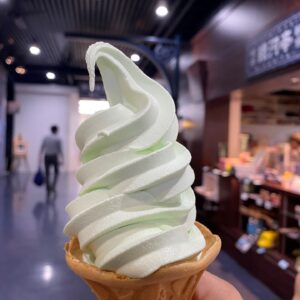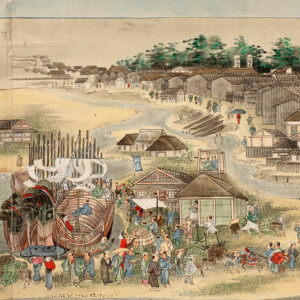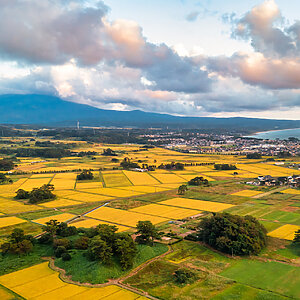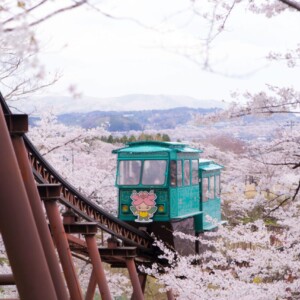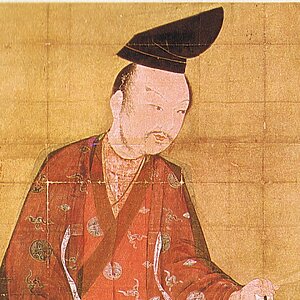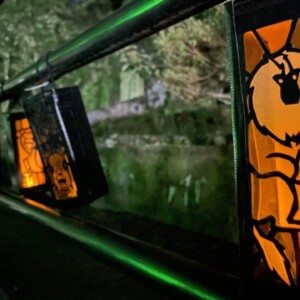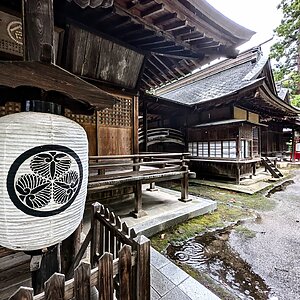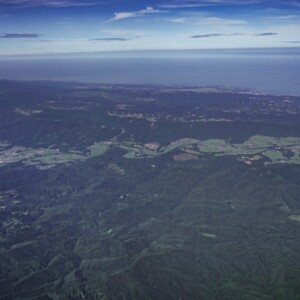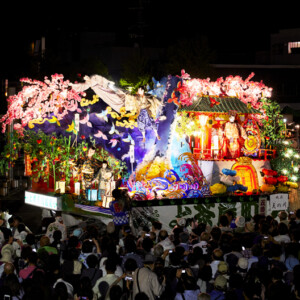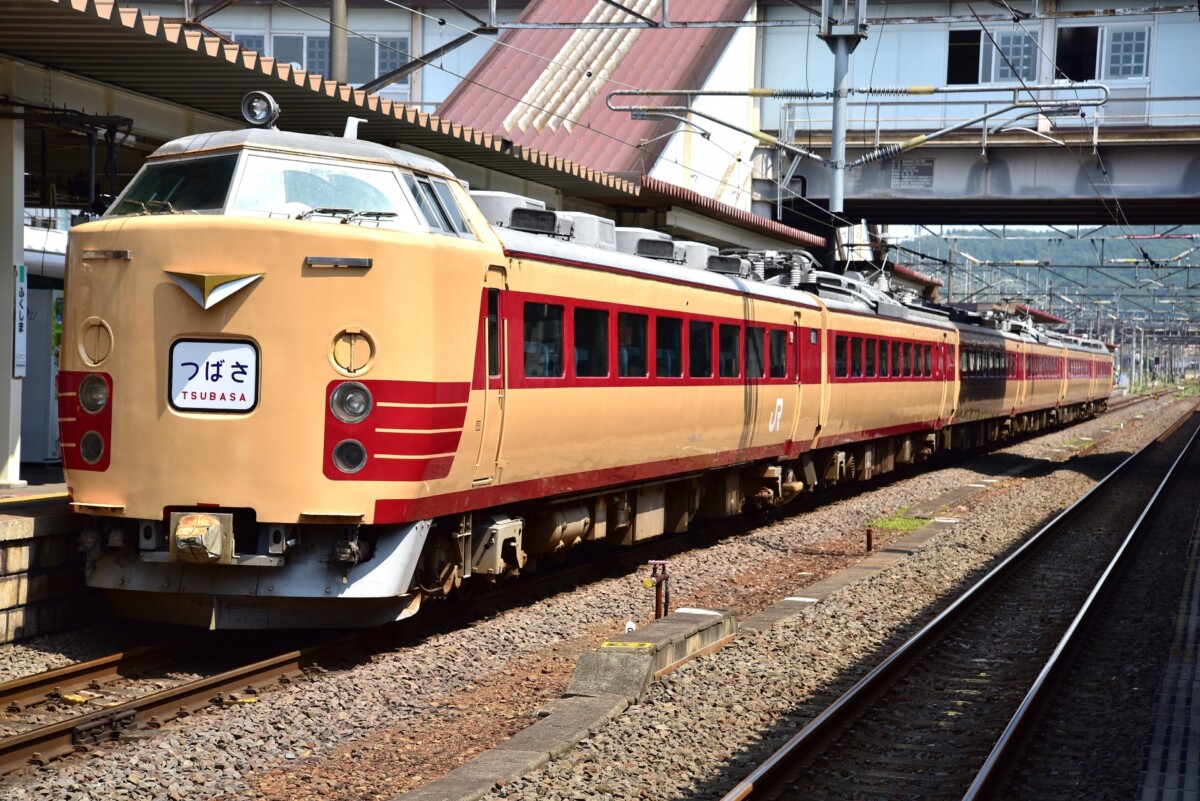
From diesel express trains to bullet trains... The path of Tsubasa [Akita Prefecture and Yamagata Prefecture]
table of contents
- 1 "Tsubasa" began operation as a diesel express train
- 2 Introducing the "Tsubasa" and "Yamabato" express trains departing from Morioka Station
- 3 Itaya Pass: Even new trains have difficulty crossing it
- 4 "Tsubasa" becomes an express train
- 5 Changes following the opening of the Tohoku Shinkansen
- 6 Service ended with the opening of the Yamagata Shinkansen
- 7 in conclusion
the Yamagata Shinkansen " Tsubasa " mainly connects Tokyo Station with Yamagata Station or Shinjo Station in Yamagata Prefecture.
Even if you're not particularly a fan of trains, if you live in Yamagata or have been to Yamagata, there are likely many people who know about it or have ridden it.
The Yamagata Shinkansen opened in 1992, but a train called "Tsubasa" had been running before that.
we will introduce the limited express "Tsubasa," which can be considered the predecessor of the Yamagata Shinkansen
"Tsubasa" began operation as a diesel express train
The Tsubasa limited express began
operation with the timetable revision in October 1961. from Ueno Station in Tokyo Akita Station Akita Prefecture, stopping at Utsunomiya Station and Kuroiso Station in Tochigi Prefecture, Koriyama Station and Fukushima Station in Fukushima Prefecture, Yonezawa Station, Yamagata Station and Shinjo Station in Yamagata Prefecture, and Yokote Station in Akita Prefecture.
In terms of line names, the section between Ueno Station and Fukushima Station is the Tohoku Main Line, and the section between Fukushima Station and Akita Station is the Ou Main Line.
According to the timetable at the start of service, the outbound train departed Ueno Station at 12:30, arrived at Fukushima Station at 16:11, and arrived at Akita Station at exactly 21:00.
The inbound train departed Akita Station at 8:10, arrived at Fukushima Station at 12:57, and arrived at Ueno Station at 16:40.
8 hours and 30 minutes for both inbound and outbound trains .
The current Akita Shinkansen "Komachi" can travel between Ueno Station and Akita Station in about 3 hours and 50 minutes, so the "Tsubasa" at the time took more than twice as long.
However, at the time there was no train that connected Ueno and Akita in less time than the "Tsubasa," so it seems that there was a lot of demand for it.
In 1958, the Hatsukari limited express train, which ran between Ueno Station and Aomori Station, began operation as the first limited express train in the Tohoku region. However,
since the Hatsukari traveled via the Joban Line south of Miyagi Prefecture, it did not pass through Utsunomiya Station or Fukushima Station on the Tohoku Main Line.
The Tsubasa was the first limited express train to pass through these stations.
*For more information on the Hatsukari Express, please see this article
There was also an express train called "Oga" that ran between Ueno Station and Akita Station.
Please take a look at the article for more details about "Oga."
When the Tsubasa first began operation, it was operated with six-car
Kiha 82 series diesel railcars These were mass-produced vehicles based on the Kiha 81 series, the first express diesel railcar of the Japanese National Railways (the predecessor of JR).
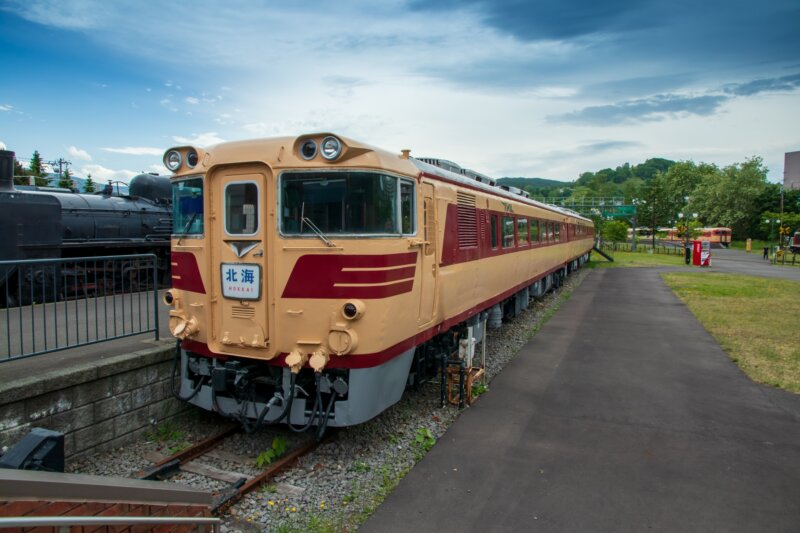
A diesel railcar is a vehicle that runs on an engine powered by fuel installed on board.
In Japan, diesel fuel is the norm, and the train is also called a diesel car.
The Tsubasa began its life as a diesel express train.
Between Fukushima Station and Yonezawa Station, the train crosses
Itaya Pass Crossing this section using only the power of the Kiha 82 series engine would have put a lot of strain on the engine, so a helper locomotive was coupled.
However, even with the help of the locomotive, it still took about an hour to cover the short 43km distance from Fukushima Station to Yonezawa Station
(the current Tsubasa takes about 35 minutes).
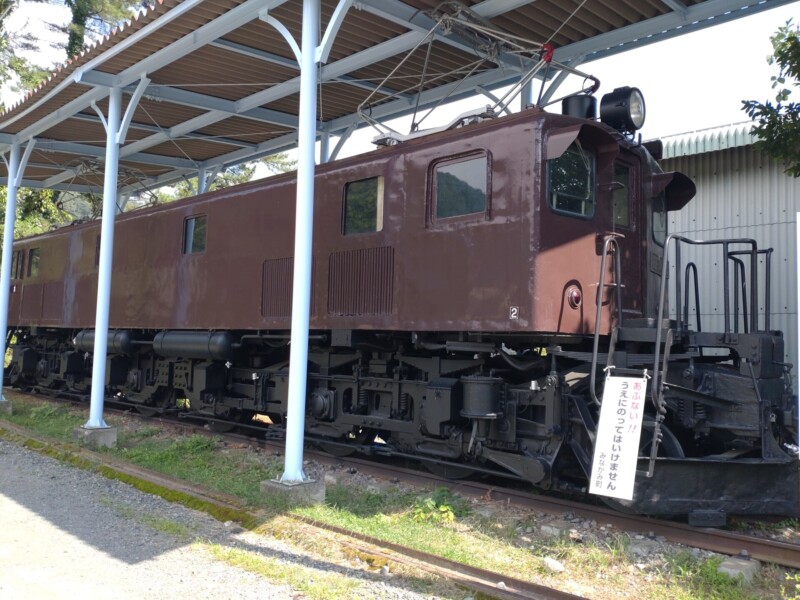
*For more information on the history of the Itaya Pass railway, please see this article
Introducing the "Tsubasa" and "Yamabato" express trains departing from Morioka Station
In 1963, one car was added to the "Tsubasa" train, making it a seven-car train.
Furthermore, the "Tsubasa" train connecting Ueno Station and Morioka Station in Iwate Prefecture also began to operate with a six-car Kiha 82 series train.
Between Ueno Station and Fukushima Station, a seven-car train departing from Akita Station was coupled with a six-car train departing from Morioka Station, making a 13-car train
(similar to the current Shinkansen "Yamabiko" and "Tsubasa" trains that run coupled between Tokyo Station and Fukushima Station).
In October 1964, one car was added to the train departing from Morioka Station, making it a 14-car train, including the train departing from Akita Station.
At the same time, the Yamabato limited express train, which connects Ueno Station and Yamagata Station , began operation with a seven-car Kiha 82 series
train. The current Yamagata Shinkansen, Tsubasa, connects Tokyo Station with Yamagata Station and Shinjo Station, so this Yamabato train is closer in nature to the current Yamagata Shinkansen.
In 1965, the "Tsubasa" train departing from Morioka Station was separated from the "Tsubasa" train departing from Akita Station and renamed
Yamabiko " This nickname "Yamabiko" was later passed down to trains on the Tohoku Shinkansen.
In addition, one round trip of the "Tsubasa" train departing from Akita Station was added, making it two round trips per day.
With the timetable revision in October 1968, some Tsubasa trains began to run to Tokyo Station, and for a limited period of one year, the Kiha 81 series, the original diesel railcar for express trains, was used on Tsubasa trains.
This car has a distinctive front shape known as a bulldog.
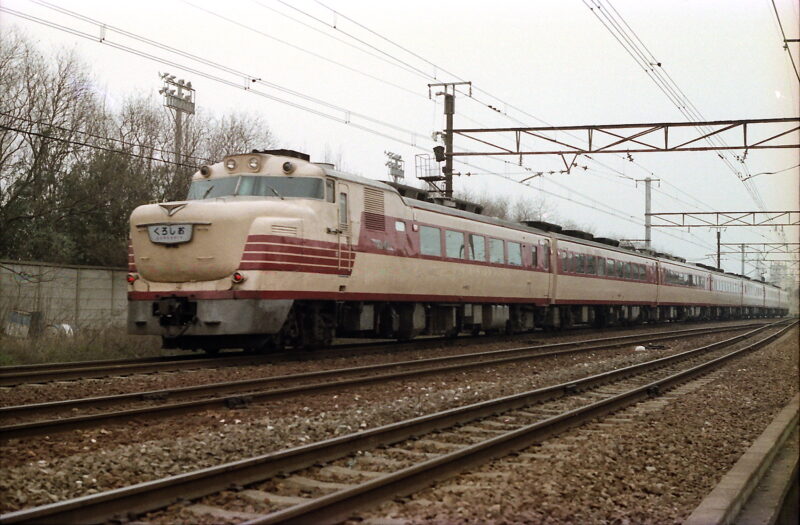
Author: Gohachiyasu1214 – Own work, CC BY-SA 4.0
, https://commons.wikimedia.org/w/index.php?curid=76865554
Itaya Pass: Even new trains have difficulty crossing it
The Kiha 82 series was coupled with a helper locomotive at Itaya Pass, but in 1970, new Kiha 181 series diesel railcars were introduced to the Tsubasa so that it could climb the slope under its own power.
This slightly reduced the journey time between Ueno Station and Akita Station to around 8 hours and 15 minutes, and the number of cars was increased from the previous 7 to 10.
The following year, in 1971, another increase was made to the number of cars, bringing the total to 12.
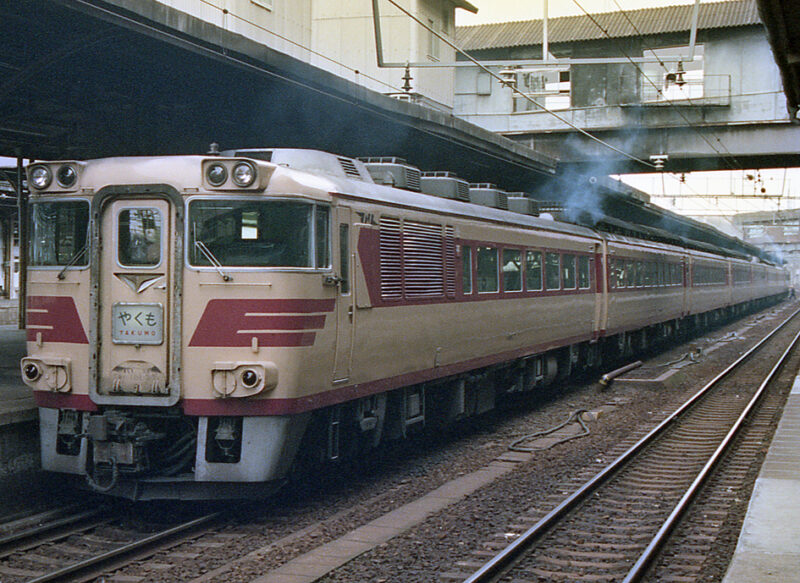
Author: Spaceaero2 – Photo by myself, CC Attribution-ShareAlike 3.0
, https://commons.wikimedia.org/w/index.php?curid=2002979
However, climbing the Itaya Pass on its own was too much for the Kiha 181 series, and engine troubles were frequent, especially in the summer.
In the end, until the "Tsubasa" was replaced by electric trains, again couple a helper locomotive to cross the Itaya Pass .
"Tsubasa" becomes an express train
In 1975, the entire Ou Main Line was electrified (*), allowing trains to run on it.
The Tsubasa was then converted into a limited express train, consisting of 12
485 series electric trains The 485 series is one of the most representative vehicles of the Japanese National Railways, with 1,453 cars manufactured.
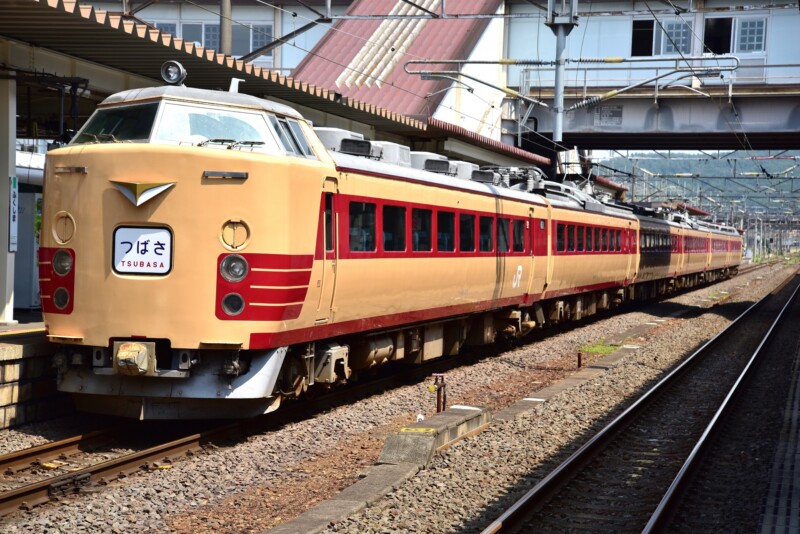
The journey time between Ueno Station and Akita Station was reduced to approximately 7 hours and 35 minutes, and the journey time between Fukushima Station and Yonezawa Station, crossing the Itaya Pass, was reduced to approximately 40 minutes, showing the difference in performance between diesel railcars and electric trains at the time
With the timetable revision in October 1978, the number of round trips was increased to three per day, although the journey time increased slightly
*The Ou Main Line will return to non-electrification between Shinjo Station and Innai Station, a section that crosses Yamagata and Akita prefectures, from 2025.
Please see this article for more details.
Changes following the opening of the Tohoku Shinkansen
In June 1982, opened
between Omiya Station and Morioka Station In November, this marked a major change in the operation of conventional express trains on the Tohoku Main Line, which runs parallel to the Tohoku Shinkansen.
Of course, the Tsubasa was no exception.
Before the timetable change in November, the Tsubasa operated three round trips a day between Ueno Station and Akita Station
- Ueno Station to Akita Station: 1 down train, 2 up trains
- Fukushima Station to Akita Station: 3 down trains, 3 up trains
- Yamagata Station → Akita Station: 1 down train
The above changes have been made.
The number of trains running between Ueno Station and Fukushima Station, which runs parallel to the Tohoku Shinkansen, has been reduced to 1.5 round trips per day.
Until now, the Tsubasa's starting and ending stations within the Tohoku region Akita Station Morioka Station (which operated for a very short period of time) , but Fukushima Station and Yamagata Station have now been added.
The number of cars has also been reduced from 12 to 9.
The reason for this reduction is probably because fewer people are using the Tsubasa to Akita Station.
With the opening of the Tohoku Shinkansen, it has become possible to travel between Fukushima Station and Akita Station in less time by transferring from the Tohoku Shinkansen to the limited express "Tazawa" at Morioka Station than by taking the "Tsubasa."
People heading to Akita from Fukushima Prefecture and the Tokyo metropolitan area have started to use the route via Morioka instead of the "Tsubasa."
In March 1985, the Tohoku Shinkansen was extended to Ueno Station
.
- Ueno Station to Akita Station: 1 round trip
- Fukushima Station to Akita Station: 3 round trips
- Fukushima Station to Yokote Station: 1 round trip
- Fukushima Station to Shinjo Station: 1 round trip
- Fukushima Station to Yamagata Station: 2 round trips
- Yamagata Station to Aomori Station: 1 round trip
(The Yamabato service, which connected Ueno Station and Yamagata Station, was discontinued with this timetable revision.)
Yokote Aomori Station have been newly added to the lineup of starting and ending stations
The reason why only one round trip train remains departing and arriving at Ueno Station is probably due to the fact that the trains are shared (reused) with the Aizu Limited Express (operating between Ueno Station and Aizu-Wakamatsu Station), rather than the convenience of being able to avoid having to transfer between the Shinkansen and conventional lines at Fukushima Station
The trains used vary in a complex way, with some trains being 9 cars, others being 6 cars without a green car, and some trains being 9 cars with a green car depending on the season
In the November 1986 timetable revision, service to Aomori Station was discontinued after just over a year and a half, and service was reduced to just Yamagata Station and Akita Station.
The number of cars on this train was also reduced to three (five depending on the season).
Since then, the service area has been extended and the frequency of the service has been increased several times.
During this process, Omagari Station in Akita Prefecture was added to the lineup of starting and ending stations.
Service ended with the opening of the Yamagata Shinkansen
Construction work to open the Yamagata Shinkansen line between Fukushima Station and Yamagata Station on the Ou Main Line began in 1990.
Please see the article below for details on how the Yamagata Shinkansen line came to be .
The following year, in 1991, Tsubasa service between Fukushima Station and Yamagata Station ended.
Trains that departed from and arrived at Ueno Station and Fukushima Station changed direction at Yamagata Station and began operating via the Senzan Line (a line connecting Sendai Station and Uzen-Chitose Station in Yamagata Prefecture)
(Ueno Station via the Tohoku Main Line, Sendai Station via the Senzan Line, Yamagata Station via the Ou Main Line, Akita Station, etc.).
With this change, trains that departed and arrived at Fukushima Station were changed to start and end at
Sendai Station Tsubasa has now become
a train that has started and ended all stations in the prefectural capitals of the six Tohoku prefectures (Akita, Morioka, Yamagata, Fukushima, Aomori, and Sendai) In that sense, it may be fair to say that it was a limited express train that had such a presence that it represented the trains of the Tohoku region.
The Yamagata Shinkansen opened on July 1, 1992, and began operating between Tokyo Station and Yamagata Station.
This new train was nicknamed "Tsubasa," and the conventional line express "Tsubasa" ceased operation .
However, although the Shinkansen "Tsubasa" has retained its nickname, it only operates within Yamagata Prefecture, so it has lost the role of providing access to Akita Prefecture that the conventional line express "Tsubasa" played. To reiterate
, if we were to use the name of an old train as an example, it is closer to "Yamabato" than "Tsubasa."
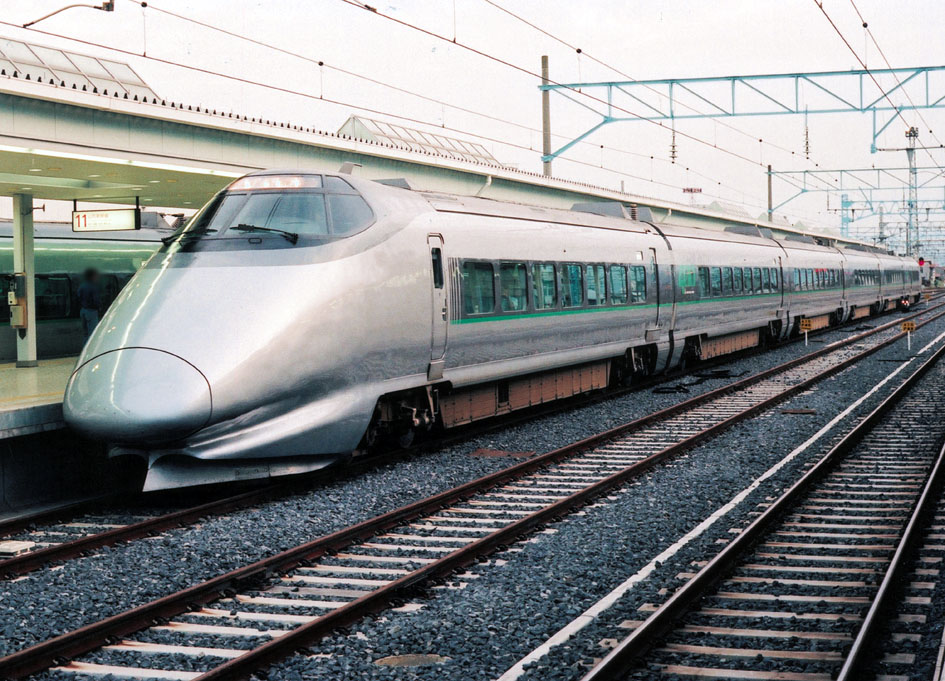
Author: spaceaero2 – Own work, CC BY 3.0
, https://commons.wikimedia.org/w/index.php?curid=7808984
Meanwhile, the new limited express "Komakusa" began operating between Yamagata Station and Shinjo/Akita Station, where the conventional line "Tsubasa" previously operated.
was changed to a rapid train and limited to service north of Shinjo Station .
In 2002, the rapid "Komakusa" was discontinued.
in conclusion
The Tsubasa limited express train on conventional lines has long served as a link between the Tokyo metropolitan area, Fukushima Prefecture, and Yamagata and Akita Prefectures.
I hope that you will remember that there was once such a train.


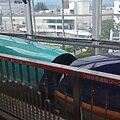





![Work to expand Yamagata Shinkansen approach line at Fukushima Station [Fukushima Prefecture] DSC_2592](https://jp.neft.asia/wp-content/uploads/2024/09/DSC_2592-150x150.jpg)
![Why was the Yamagata Shinkansen "Tsubasa" born on the mini Shinkansen? [Yamagata Prefecture] 3106705_l](https://jp.neft.asia/wp-content/uploads/2024/05/3106705_l-150x150.jpg)
![Railways at Itaya Pass, which took on steep slopes and harsh climates [Fukushima Prefecture and Yamagata Prefecture] 26554002_l](https://jp.neft.asia/wp-content/uploads/2024/07/26554002_l-150x150.jpg)
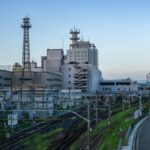
![For some reason, do they have a lot of unusual names? Station names on the Ou Main Line [Fukushima, Yamagata, Akita] 27651763_L](https://jp.neft.asia/wp-content/uploads/2024/05/27651763_l-150x150.jpg)
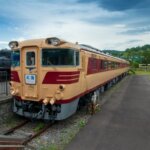
!["Mogami safflower" certified as a Japanese heritage and Japanese agricultural heritage [Yamagata Prefecture] Mogami safflower](https://jp.neft.asia/wp-content/uploads/2022/12/30121446_m-1-150x150.jpg)
![Hot springs gush out in a place where there are no volcanoes! "Yuzawa Geopark" where you can see the mystery of the earth up close [Akita Prefecture] 4550228_m](https://jp.neft.asia/wp-content/uploads/2023/02/4550228_m-150x150.jpg)
